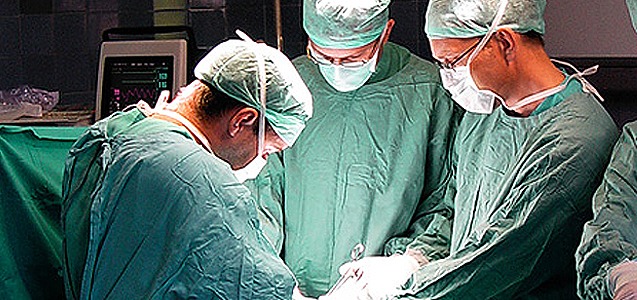
Common Bile Duct Injuries Can Have Devastating Consequences
A healthy gallbladder stores bile, which is produced in the liver, and releases the bile into the small intestine to help in the digestion of food. Gallstones are small, hard, gravel-like deposits that can form inside the gallbladder. Gallstones cause pain, inflammation, infection, and blockages of the tubes, called bile ducts, which enter and exit the gallbladder. Gallstones are the most common cause of gallbladder surgery. The surgical procedure to remove the gallbladder is called cholecystectomy, and this surgery can be performed by entering the abdomen through a single, long, incision (known as open cholecystectomy) or through 3 or 4 small cuts (known as laparoscopic cholecystectomy).
Laparoscopic cholecystectomy (known as “lap choly”) is the most common and effective way to remove the gallbladder. During laparoscopic cholecystectomy, the surgeon attaches a camera and light to a scope which is inserted through one of the small incisions. The camera projects the inside of the abdomen in real time, and the doctor uses the live-feed video to guide the surgical instruments through the other small incisions and perform the surgery.
The smaller incisions typically allow the ”lap choly” patient to recovery more quickly and less painfully from gallbladder surgery, but there can also be downsides. Since the surgeon is looking at the gallbladder through a video camera there is only a two-dimensional view of the surgery being performed, rather than the three-dimensional view that open surgery allows. This affects the surgeon’s depth perception, leaving room for medical error, such as a cut, clipped or pinched bile duct. When this unfortunate form of medical malpractice occurs, blockage can occur or bile can seep from the duct and cause an infection which may even enter into the bloodstream (sepsis).
An injury to the common bile duct during gallbladder removal surgery can be very serious and even deadly if not treated in time. Symptoms can include jaundice (yellowing of the skin or eyes), intense abdominal or stomach pain, fever, chills, nausea, or swelling of the abdomen. Treatment of a common bile duct injury often requires surgical repair and can include additional gastrointestinal surgical procedures such as Roux-en-Y hepaticojejunostomy. Even patients who have had surgery to repair their common bile duct injuries can have further issues such as obstruction of bile flow.
Over half a million people have gallbladder surgery every year, making it a very common practice in the United States. Unfortunately, due to medical negligence, approximately one in every one thousand laparoscopic cholecystectomy surgeries results in bile duct injuries.
If you would like to discuss your potential claim arising from a common bile duct injury, the attorneys at Yost Legal Group are experienced professionals ready to investigate your claim with compassion and determination. For a free consultation, please call us at 1-800-YOST-LAW (967-8529).